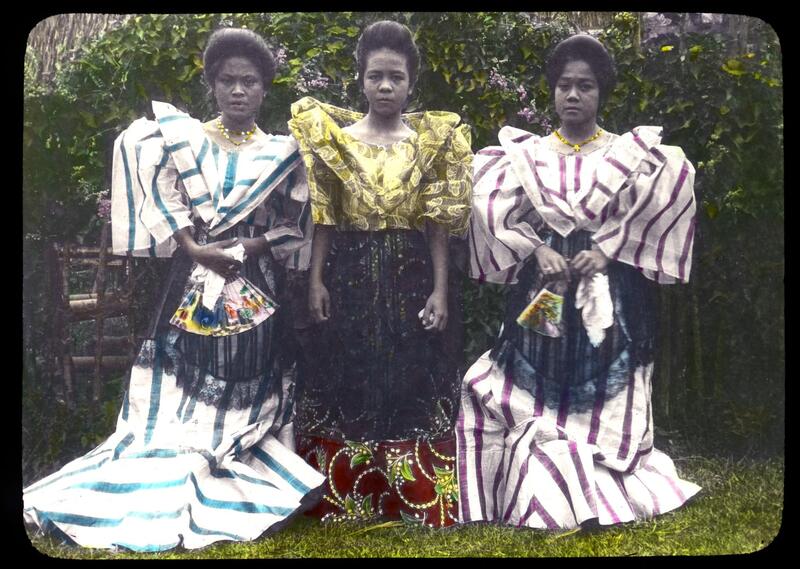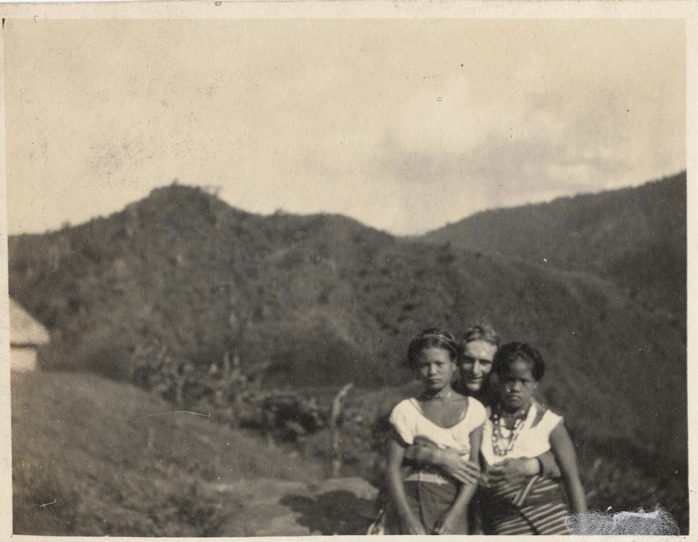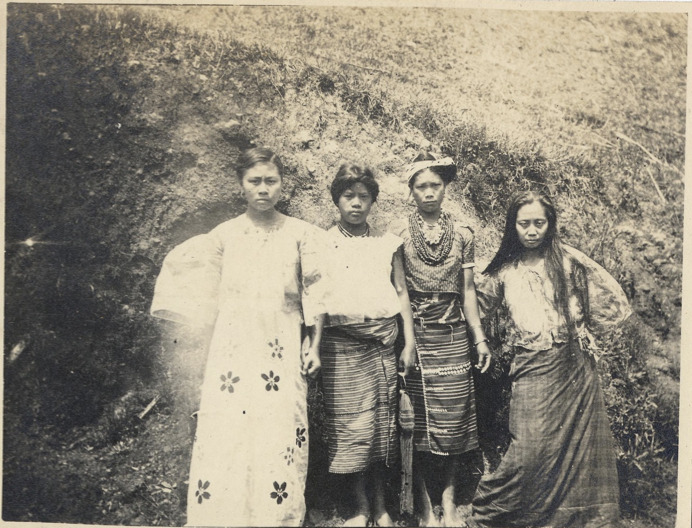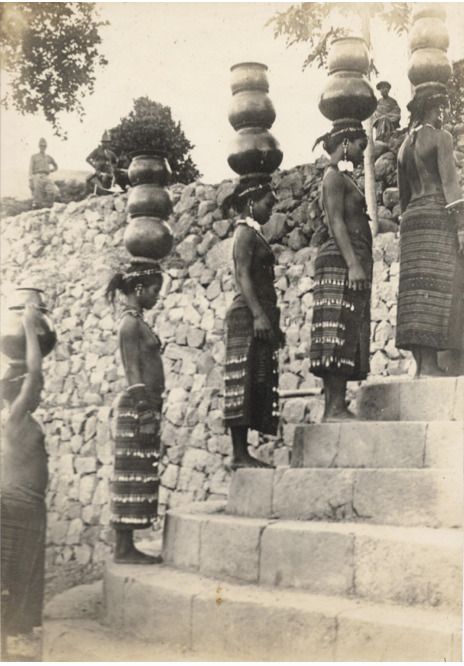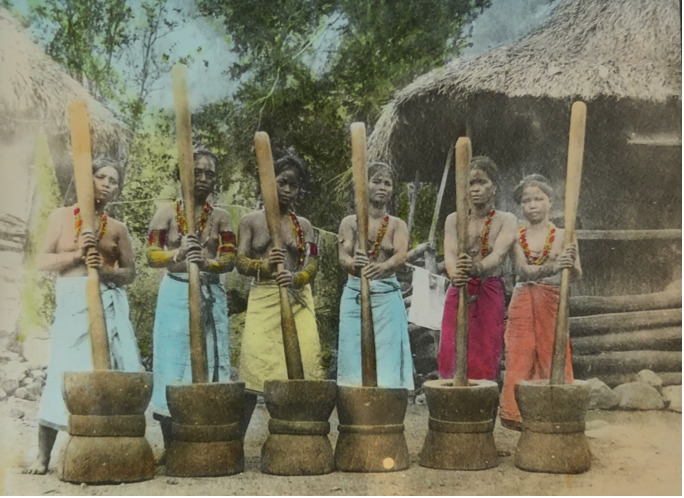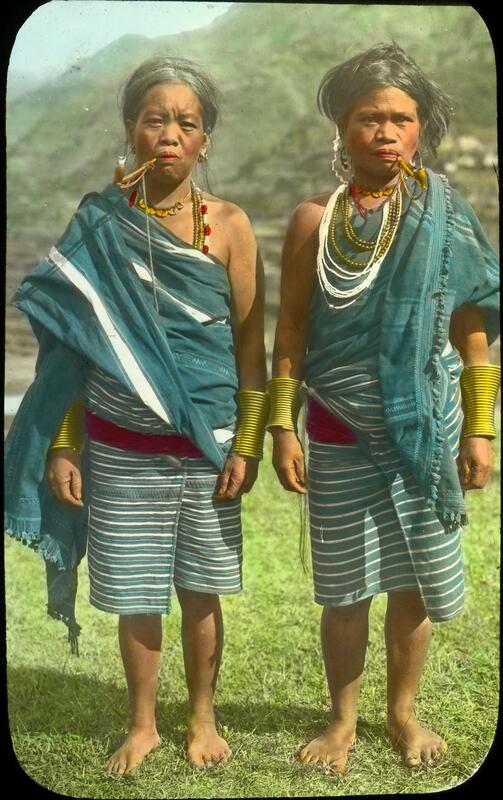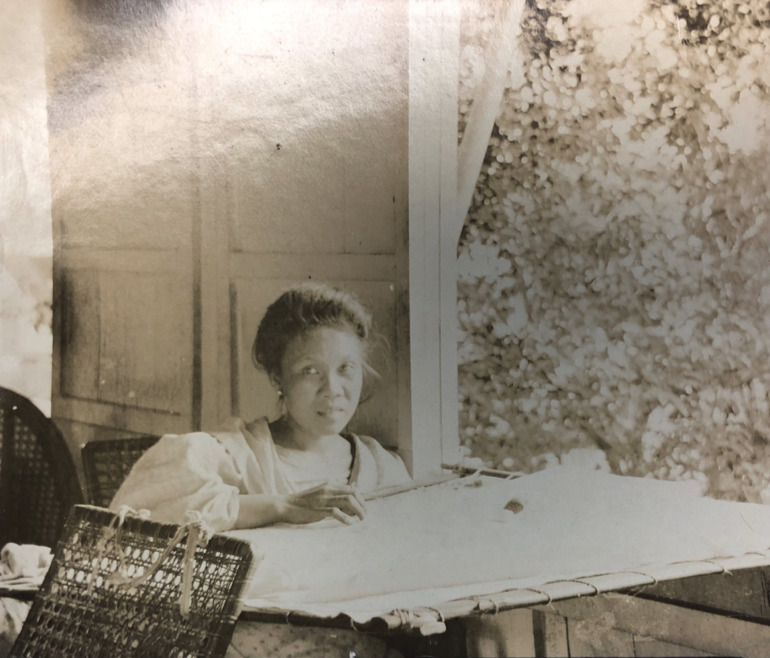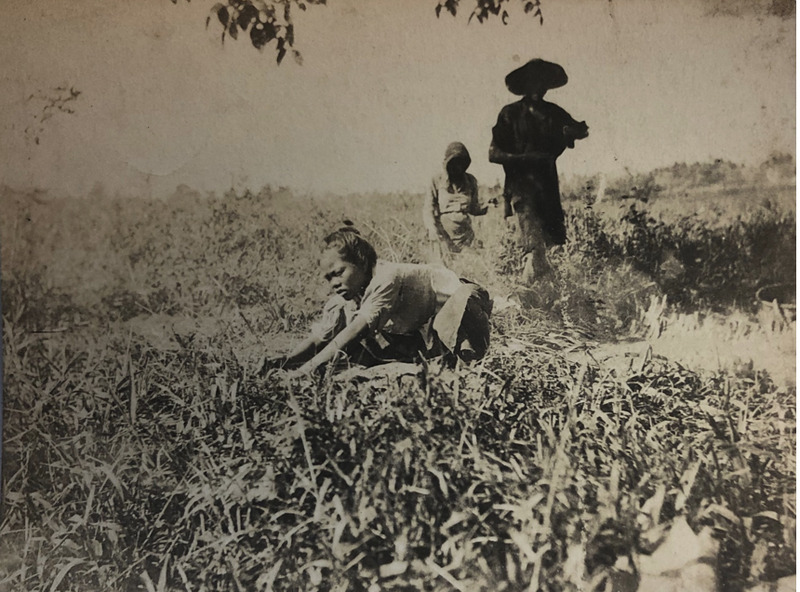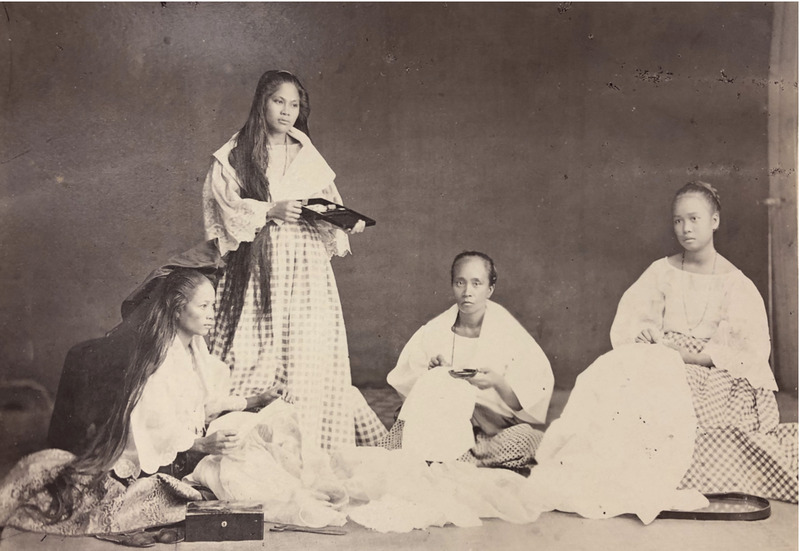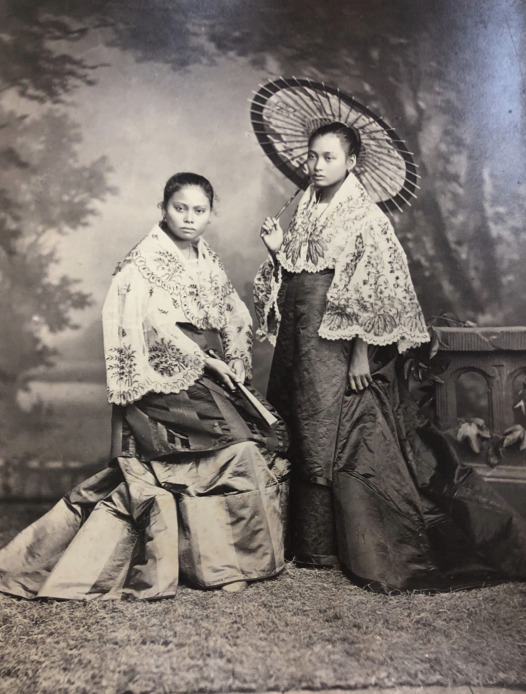Content Warning: Some photographs on this page contain nudity. The Michigan in the World research team and the Bentley Historical Library staff fully recognize and respect the rights of the subjects in these photos. These photos are to be used for educational purposes only.
Gender and the Imperial Gaze
Developing a Critical Lens
Photographs can offer opportunities for historical analysis, but it is imperative to develop a critical lens. What do we mean by critical lens? Using a critical lens means engaging in a deep and detailed analysis of an image, or text, that exposes what may not be obvious or evident at first glance. Especially because the photos in this post come from an imperial archive, we have to consider the historical context and examine the images beyond what is shown in the frame. Some of these images communicate ideas that distort reality, although photos are often seen as authentic snapshots of the real world. Through a critical lens, we are able to challenge the oppressive structures of power that photographic technologies often produce.
There are a variety of factors the historian must be aware of when examining photographs in an archive. In some photos, the subjects were posed to portray a certain image. Some photos may have been taken without consent from the subjects. Photographs are a unique and valuable source but they require critical methods and intense deliberation in order to be analyzed effectively and ethically.
This research project thoroughly considered critical ways of reading images in the archive. For a look inside our process, follow the exercise below. Each collection of images corresponds with guiding questions that will help you to practice reading images with a critical lens, and ultimately develop your own rigorous historical interpretations.
An Exercise in Archival Photography
When analyzing a photograph, you should ask yourself a series of questions to deepen your perspective. First, read the introductory paragraph for the collection, which provides you with some background information. Then, read the guiding questions provided along with each image collection before taking a look at each individual image. Your answers to the questions will help you to apply a critical lens as you interpret the photos of Philippine women throughout this exhibit.
COLLECTION ONE
The three images in this collection were sourced from the Tiffany Williams photograph collection from the Philippine Photographs Digital Archive, Special Collections Research Center at the University of Michigan. Williams was an American soldier, businessman and graduate of Kemper Military School in 1914. He was a commissioned officer in the Philippine Constabulary from 1914-17. Williams was also a marketing assistant, assistant manager, and manager in the South China Division of Standard-Vacuum Oil Company from 1917-42, and a major in the US Army during WWII.
STEP ONE: Observe. Note your initial impressions of the image.
1. What do you notice first?
2. What people and objects are shown?
3. How are they arranged?
4. How would you describe the scene?
5. What is happening in the photo?
6. What textual clues are there (words, signs, captions, etc.)? And what do they tell you?
7. Is the photo black and white or in color?
8. Are there details you cannot identify?
STEP TWO: Reflect. Expand your contextual understanding.
1. When was the image made?
2. Who was the photographer? What was their position?
3. Why do you think these photos were taken?
4. Who do you think was the intended audience?
5. Are there clues in the citation that reveal more about the context?
6. How would you compare and contrast your reaction to the image to that of someone from the time period?
STEP THREE: Generate. Connect your observations with what you already know.
1. Based on the details that you noted from step one, what themes does this image project?
2. What ideas, values, or ideologies do you think the image communicates and/or supports?
3. What do you think, if anything, the image hides, misrepresents, or fails to show?
4. What feelings does the image generate for you, and what do you make of it?
5. What additional questions can we ask of the photographs and the album, and how might we begin to answer those questions?
6. What do you need to learn more about, and how can you expand your understanding of the image?
COLLECTION TWO
Walter W. Marquardt was a Thomasite and director in the Philippines from 1916-1919. As you examine the images, think about how this might this have influenced his perspective and leverage as a photographer.
STEP ONE: Observe. Note your initial impressions of the image.
1. What do you notice first?
2. What people and objects are shown?
3. How are they arranged?
4. How would you describe the scene?
5. What is happening in the photo?
6. What textual clues are there (words, signs, captions, etc.)? And what do they tell you?
7. Is the photo black and white or in color?
8. Are there details you cannot identify?
STEP TWO: Reflect. Expand your contextual understanding.
1. When was the image made?
2. Who was the photographer? What was their position?
3. Why do you think these photos were taken?
4. Who do you think was the intended audience?
5. Are there clues in the citation that reveal more about the context?
6. How would you compare and contrast your reaction to the image to that of someone from the time period?
STEP THREE: Generate. Connect your observations with what you already know.
1. Based on the details that you noted from step one, what themes does this image project?
2. What ideas, values, or ideologies do you think the image communicates and/or supports?
3. What do you think, if anything, the image hides, misrepresents, or fails to show?
4. What feelings does the image generate for you, and what do you make of it?
5. What additional questions can we ask of the photographs and the album, and how might we begin to answer those questions?
6. What do you need to learn more about, and how can you expand your understanding of the image?
COLLECTION THREE
Harry Newton Cole was Thomasite in the Philippines. Consider how his interactions with the women in these photos might have been shaped by his role as a teacher during the US colonial period.
STEP ONE: Observe. Note your initial impressions of the image.
1. What do you notice first?
2. What people and objects are shown?
3. How are they arranged?
4. How would you describe the scene?
5. What is happening in the photo?
6. What textual clues are there (words, signs, captions, etc.)? And what do they tell you?
7. Is the photo black and white or in color?
8. Are there details you cannot identify?
STEP TWO: Reflect. Expand your contextual understanding.
1. When was the image made?
2. Who was the photographer? What was their position?
3. Why do you think these photos were taken?
4. Who do you think was the intended audience?
5. Are there clues in the citation that reveal more about the context?
6. How would you compare and contrast your reaction to the image to that of someone from the time period?
STEP THREE: Generate. Connect your observations with what you already know.
1. Based on the details that you noted from step one, what themes does this image project?
2. What ideas, values, or ideologies do you think the image communicates and/or supports?
3. What do you think, if anything, the image hides, misrepresents, or fails to show?
4. What feelings does the image generate for you, and what do you make of it?
5. What additional questions can we ask of the photographs and the album, and how might we begin to answer those questions?
6. What do you need to learn more about, and how can you expand your understanding of the image?
COLLECTION FOUR
Dean Worcester was a University of Michigan professor of zoology and a museum curator. He led several research expeditions in the Philippines. Additionally, Worcester was a member of the First and Second Philippine Commissions and involved in several Philippines business ventures. He was an incredibly influential figure during the colonial period of the Philippines. Keep in mind this context as you examine the photos.
STEP ONE: Observe. Note your initial impressions of the image.
1. What do you notice first?
2. What people and objects are shown?
3. How are they arranged?
4. How would you describe the scene?
5. What is happening in the photo?
6. What textual clues are there (words, signs, captions, etc.)? And what do they tell you?
7. Is the photo black and white or in color?
8. Are there details you cannot identify?
STEP TWO: Reflect. Expand your contextual understanding.
1. When was the image made?
2. Who was the photographer? What was their position?
3. Why do you think these photos were taken?
4. Who do you think was the intended audience?
5. Are there clues in the citation that reveal more about the context?
6. How would you compare and contrast your reaction to the image to that of someone from the time period?
STEP THREE: Generate. Connect your observations with what you already know.
1. Based on the details that you noted from step one, what themes does this image project?
2. What ideas, values, or ideologies do you think the image communicates and/or supports?
3. What do you think, if anything, the image hides, misrepresents, or fails to show?
4. What feelings does the image generate for you, and what do you make of it?
5. What additional questions can we ask of the photographs and the album, and how might we begin to answer those questions?
6. What do you need to learn more about, and how can you expand your understanding of the image?
For more on analyzing photographs as historical sources, check out:
George Barnum, "Reading Historical Photographs: What Can we See, What Can We Learn?" (The questions in this post are adapted from Barnum's guide.) https://www.gpo.gov/docs/default-source/history-pdf-files/reading_historical_photographs.pdf?sfvrsn=2
Adrian De Leon, “Working the Kodak Zone: The Labor Relations of Race and Photography in the Philippines,” Radical History Review, no. 132 (October 1, 2018): 68–95.
Bruce Jackson, Pictures from a Drawer: Prison and the Art of Portraiture (Philadelphia, PA: Temple University Press, 2009).
Tony Othen, “Archive Photographs and History-Do They Support History or Do They Create It?,” Photography and Culture, no. 3 (September 2, 2015): 345–50.

